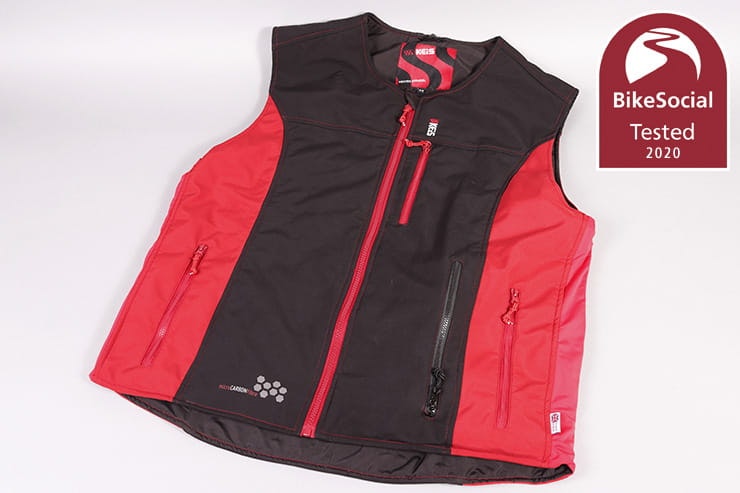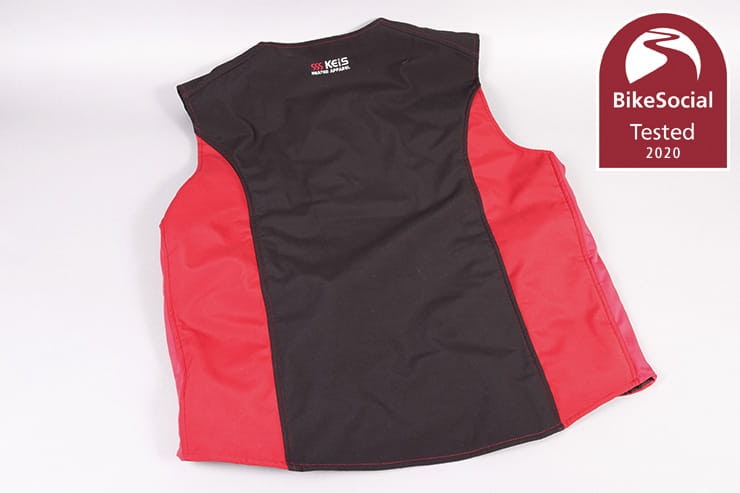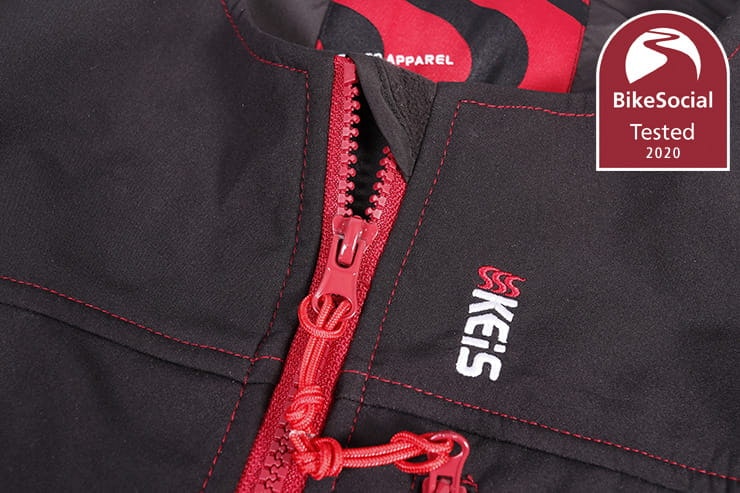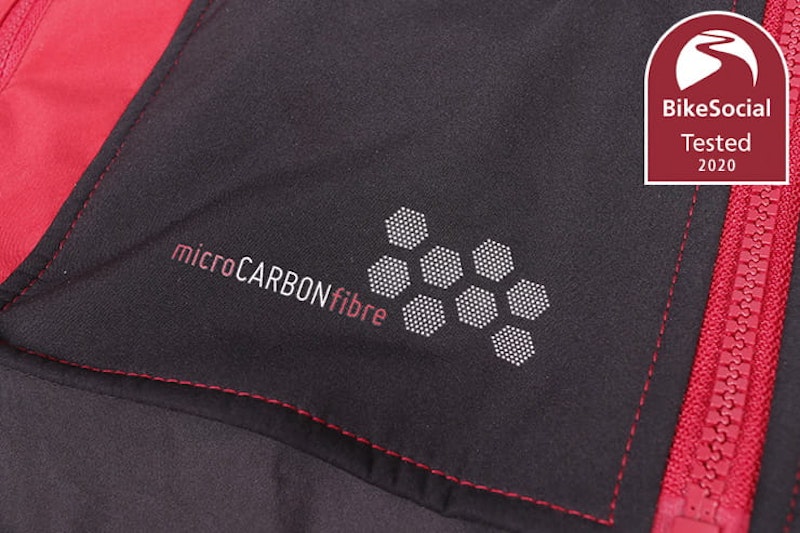Tested: Keis V501 heated vest review
By Steve Rose
BikeSocial Publisher
20.01.2020
Date reviewed: January 2020 | Tested by: Steve Rose | Price: £140 | www.keisapparel.co.uk
If you ride regularly in winter heated kit is as essential as the heater in your car. For a relatively modest outlay you can be warm on every ride. And warm means safe. Test have shown that being cold on a bike has a similar impact on a rider’s ability to concentrate as being drunk or severely tired. Warmth is a safety issue and heated kit fixes it instantly. I haven’t had any for a few years now since ‘lending’ my last set to a colleague who obviously misunderstood my intentions. I got this jacket and gloves too last November and have worn them every working day since.
Construction
There are four layers; a breathable outer shell, wind blocking membrane, carbon-fibre heating membrane and comfort inner lining. There’s an inner pocket for the battery pack if you’re using one, another for the heat controller and two more for whatever you need to store. Additional connectors allow you to plug in a harness for Keis heated gloves, trousers and boot insoles. The wiring for the vest is neat and tidy, but when using the additional harnesses the wires (especially for the gloves) need care when routing around the vest.
Micro Carbon fibre heats quickly and should last a long time
Fit
I opted for an extra large-size (44 in chest) to allow room for a few layers underneath. I wear a couple of thin thermal tops underneath and there’s plenty of room once zipped up (I probably should have gone for a ‘large’). As always, best advice is to try it with the likely kit you’ll be wearing with it.
Connection
The vest comes with the necessary wires to connect to your bike’s battery. I also have a controller unit (£35) that allows three levels of heat. In addition, I have a separate battery pack (because when road testing bikes it’s a pain to have to keep hard-wiring the jacket to a different battery every week) that costs £68 with the charger. In addition (again because of the road test requirement – you probably wouldn’t need it as much as I do) I have a 12v cigarette-lighter-socket lead that allows use on bikes with an appropriate socket and costs £19.
Connection is simple. The controller connects to a junction box in the lower left pocket on the vest and the power cable then connects directly to the connection on your bike or the battery pack.
The 12v socket lead works fine on some bikes (there’s an adapter ring for different sized sockets), but not all. I couldn’t make it work on a Yamaha FJR1300’s 12v socket for example, but it works fine on the Honda X-ADV.
Connection is simple, adding Keis gloves and/or trousers is simple too
Power, heat and control
Claimed current draw is 1.3-1.5A depending on the setting. That’s not a lot, given the amount of heat generated. In practice this means when using it with the battery pack you can use full power for about two hours or the middle setting for three hours. The controller is simple to use but not always easy to access on the move with thick gloves on.
Since I got this kit we haven’t had many days below five degrees C and so medium setting the vest has usually been too warm so far, but I’d rather be too warm than risk having cold seeping in on a long journey. All three settings seem to offer an initial burst of heat, which then drops away to a comfortable level. On the higher ones it obviously stays warmer for longer.
Separate battery pack costs £68 and lasts three hours on medium setting. Optional controller (£35) allows three different heat settings
Conclusion
There are two things that I especially like about this vest. Firstly, it warms up almost instantly, with panels at the front and rear keeping your core very warm even on medium settings. The other thing is quality of the fittings and wiring, which gives confidence that it should keep working for a very long time. If you had any experience with older generations of heated kit, you’ll understand why this matters. There’s nothing worse than coming to depend on your heated kit only for it to fail halfway round the M60 on a chilly ride home.
Heated kit only has one job, but it has to do it dependably. So far, this has been perfect.
Battery pack sits in inside pocket, but be aware that larger battery packs from older Keis vests will not fit. These can be hung from your belt using the pouch supplied with the original vest.



